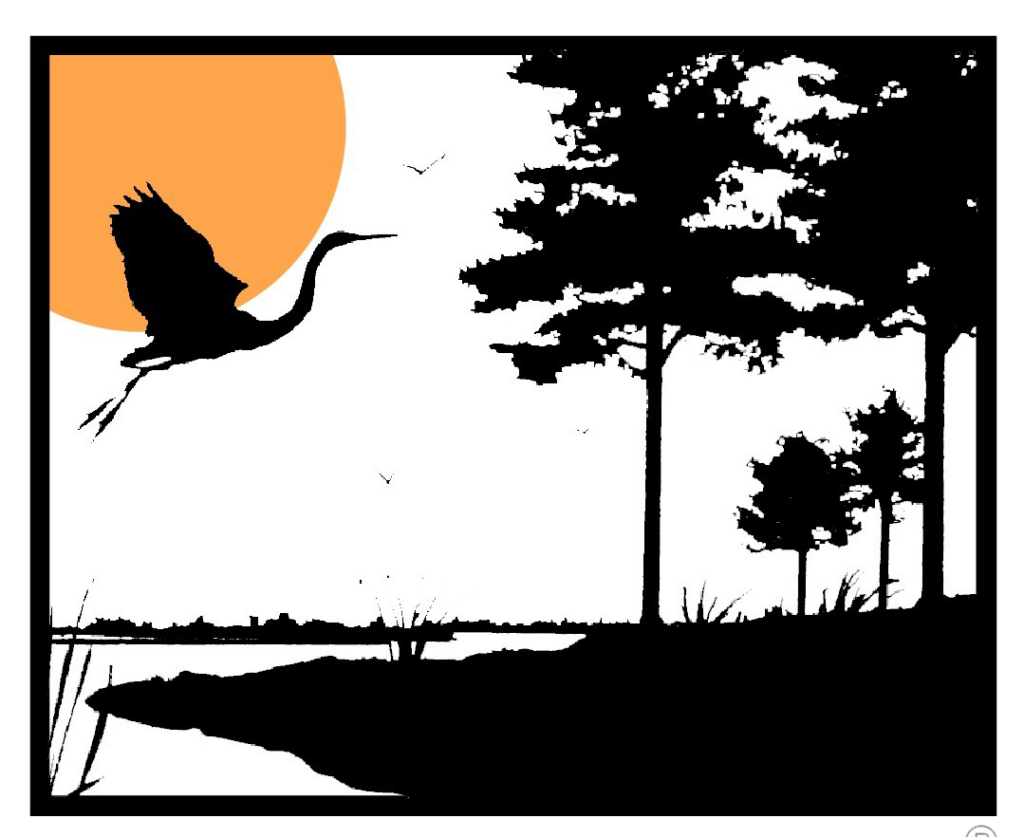Q&A With Delaware Botanic Gardens

The Delaware Botanic Gardens are set to open to the public on Monday, September 16th. Located in Dagsboro, the 37-acre garden will serve as an environmentally stable habitat, a place of tranquility and beauty, a center for education, and a draw for tourism. We spoke with Brian Trader, Director of Horticulture to learn more about the composition of the garden and what folks can expect to see.
Brian joined the project recently, on August 1st. Coming from Longwood Gardens, he is still adjusting, and is very excited to be part of the continued growth and progress of the Delaware Botanic Gardens.
Q: What does your job entail?
A: My title is the Deputy Executive Director and Director of Horticulture. I have been doing a little bit of everything, from helping our garden stewards (volunteers) manage the garden and make sure the garden is going to be looking good for our grand opening; to helping Sheryl Swed, our Executive Director, with policy and guidelines for our guests. No two days are the same; some days I am working hands-on in the garden, and other days I am answering emails, editing, and bringing my background of Public Garden Administration to this project.
Q: How many different plants are in the garden and what kinds?
A: We have several different garden areas. For example, one of our gardens is the Piet Oudolf Meadow, and that is kind of like the crown jewel of the project and the gardens. It is a two-acre meadow where there are about 70,000 plants. Of those, about 85% are native – so that is attracting a lot of pollinators and supporting our native eco-system here in the area, and also providing a lot of color and seasonal interests, from spring through winter.
Then as you walk through the gardens the is an area of the garden that we call the Woodland Edge; and that garden has been planted by girl scouts and is all native plants. It is a composition of native shrubs, native redbud trees, and lots of native perennials that they have planted in there. Then, as you progress through the garden, there is an area we call the Inland Dunes. This is a topographic feature that used to be quite common in our part of our the coastal area that we don’t see as much anymore; but it is a real sandy area that are dunes up and mounded, where we have planted exclusively native species, including thousands of blueberry bushes.
One last area I’ll mention is the folly garden. It is the site of the original home on the garden. It is wonderful to visit in the spring; there are a lot of spring bulbs panted there. It is not as vibrant right now, but in the spring it will awaken and be delightful for our guests.
Q: How much of the garden is finished, and what is left to be completed?
A: The garden is a 37-acre site. The first phase of the garden, the Piet Oudolf Meadow, has been completed, as well as the Folly Garden, and about 6-acres of the Woodlands. There will be paths through the Woodlands that lead to views of Pepper Creek. We have about 1,000 feet of waterfront, and about half of that has been developed for guests to see. We also have a garden sponsored by Dogfish Head called the “Dogfish Head Learning Garden,” which is a fresh water constructed wetland that we are using as a teaching garden to engage youth and show them lifecycles of native ecology. In years to come, there will be more gardens developed and planted. We are only in phase one of several phases.
Q: What is the maintenance like?
A: We are a very small staff, so volunteers maintain a majority of the garden. We have volunteer days on a weekly basis, and wonderful individuals come out and give their time. They are the ones who are helping us weed the gardens and water the plants. So without them we wouldn’t have a garden to be opening in a couple of weeks.
Q: Are there still volunteer opportunities available for new folks to sign up and help out?
A: Yes we do. We have docents that help guests when the come to visit the gardens, and answer questions, we have greeters, and then even opportunities for them to still be engaged in the garden hands-on.
Q: What is the environmental impact of the gardens to our area?
A: Before the property was developed into this public garden, it was a soybean field, which would have been a monoculture – just one species of plant growing. So because of the hundreds of different plants, we are really seeing a lot diversity in pollinators that have come; so many different species of butterflies and bees, but also just wildlife in general. We have seen praying mantis, and lizards – the ecology is really strong and healthy at the garden because of what we are doing.
Q: What are you most excited for the public to see when the garden opens?
A: I am most excited for the public to see the progress that has been made, and to see how we have taken a blank slate and worked with a world-renowned garden designer, Piet Oudolf, to build this meadow. I am excited for them to see the community that has been built around the garden: the community of volunteers, and how we are engaging with local businesses and nature organizations. We have partnered with the Department of Natural Resources, and the Center for Inland Bays – so many partners have made this garden possible and that is what is most exciting for me.